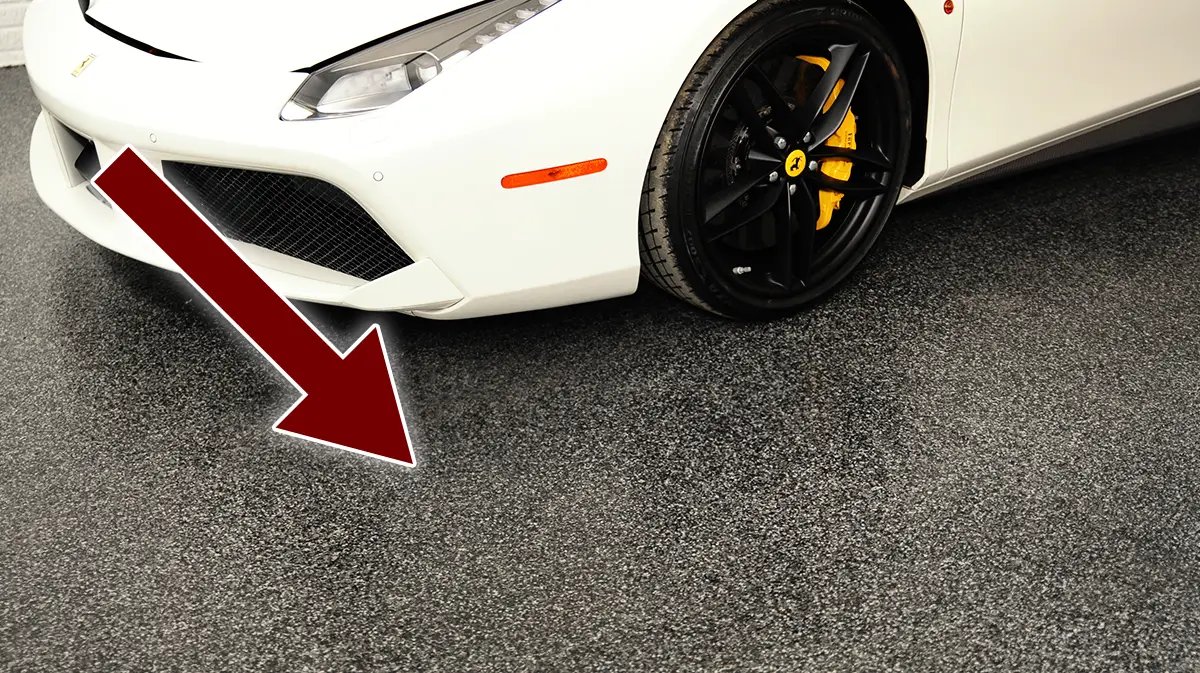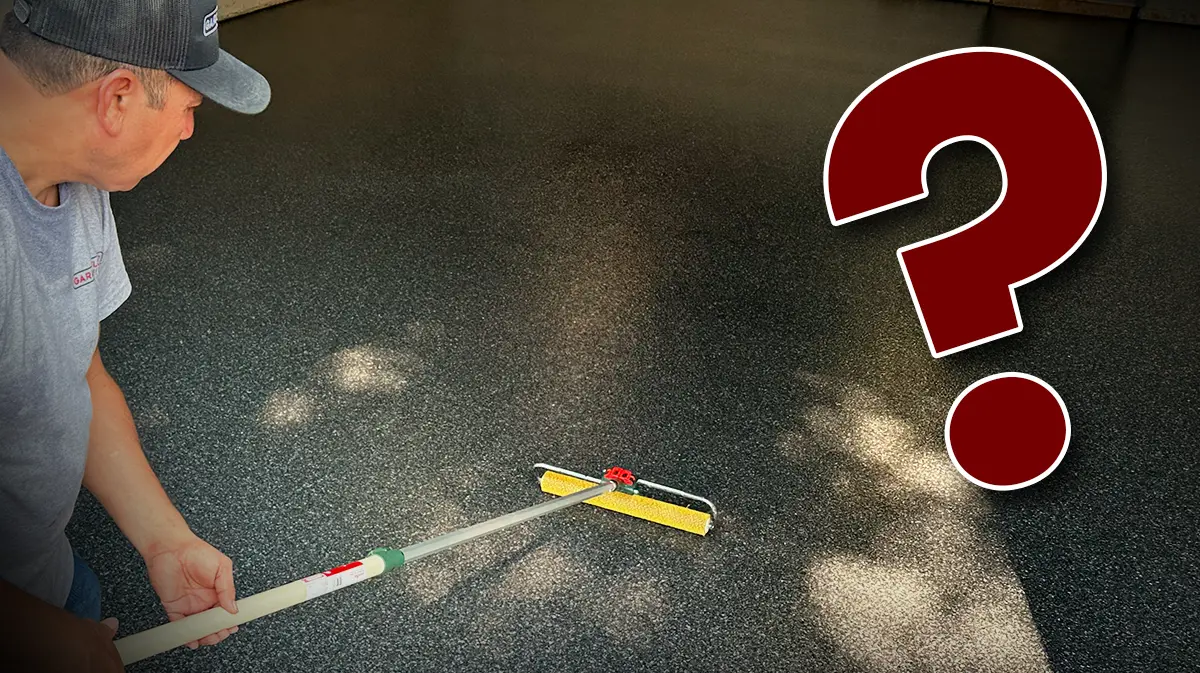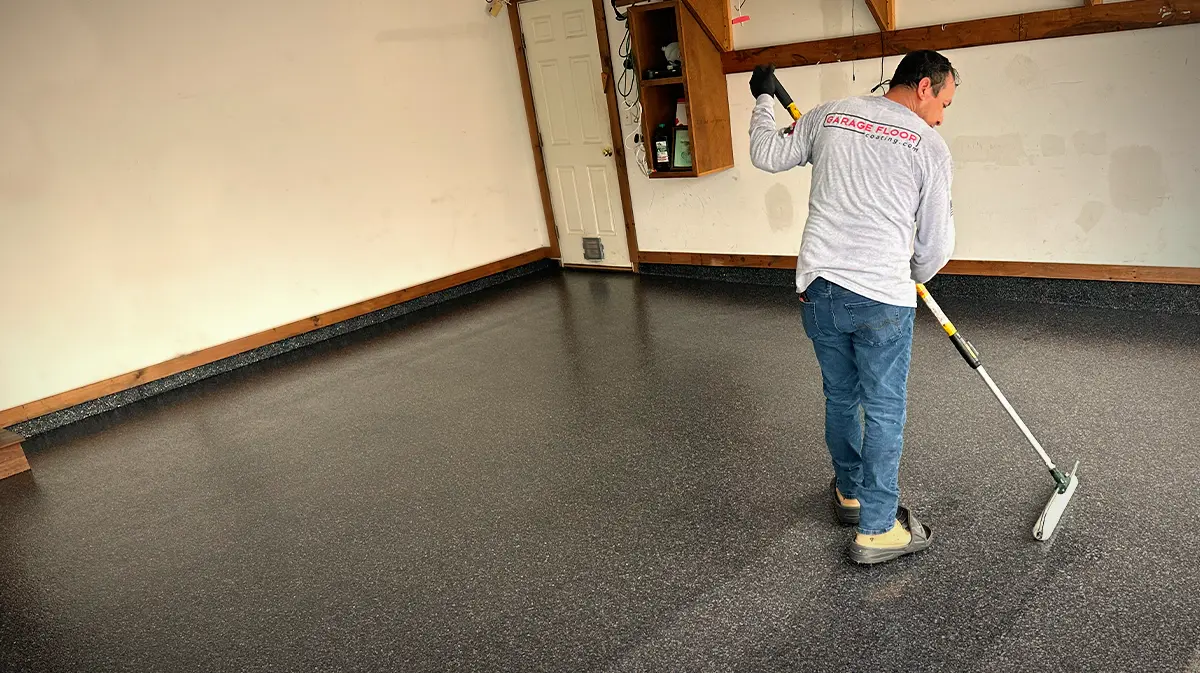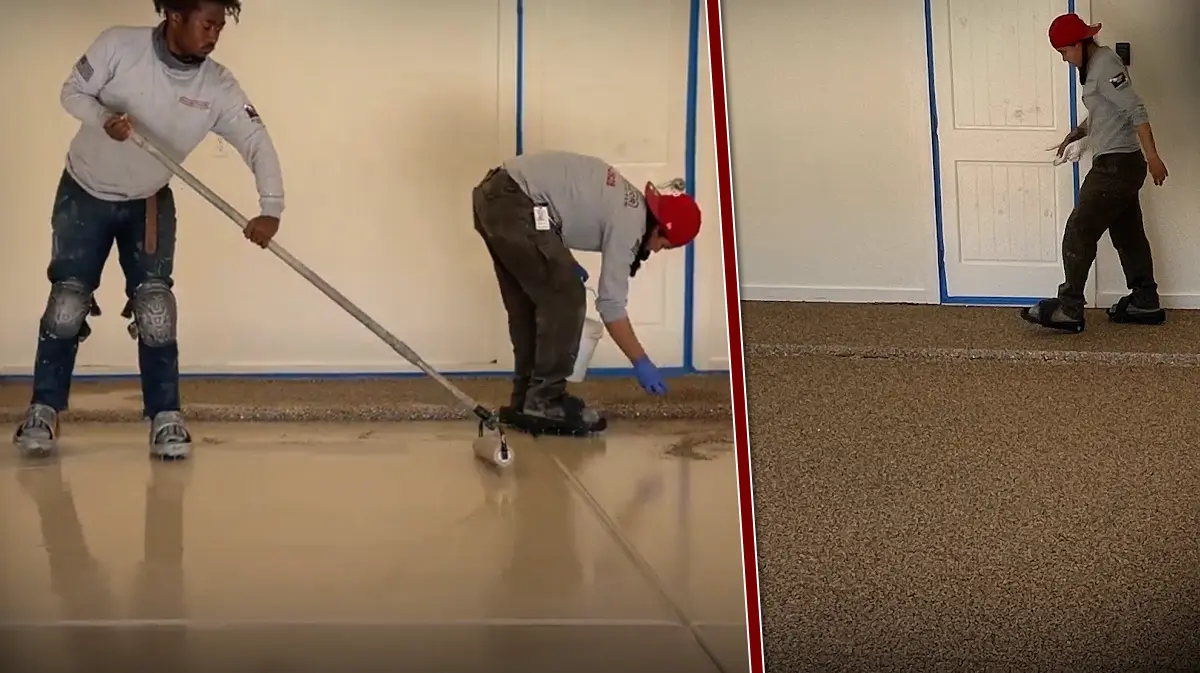In Detroit, garage floors are exposed to harsh winters, salt, and fluctuating temperatures. Choosing the right coating system is essential for protecting your garage from these elements. Here’s an in-depth comparison between the 1-day garage coatings and the more durable 2-day coating systems.
1-Day Garage Coatings: What is a 1-Day System?
The 1-day system is a fast-application process. It uses a polyurea-polyaspartic as both the direct-to-concrete primer coat and single clear top coat. Because polyurea-polyaspartics cure so quickly, the entire coating system can be installed in the promised “one day”. The process includes:
- Direct-to-concrete application: Firstly, a thin coat of polyurea-polyaspartic is applied (these coatings can only be applied thinly) as the direct-to-concrete primer coat.
- Flake Broadcast: Secondly, the customers selected flake blend is broadcast into this thin primer coat in a full-flake spread. They are are poorly embedded due to the thinness of the primer.
- Single Clear Topcoat: Finally, a single, thin, quick-curing polyaspartic is applied as the clear top coat.
These systems are thin (less than 20 mils) and marketed for their speed. However, the lack of a moisture-mitigating epoxy primer and single thin top coat can lead to future moisture-related issues in a place like Detroit. (This is why these coatings incorporate warranty exclusions to “‘moisture-related issues”).
1-Day Garage Coatings: The Drawbacks
- Moisture-related issues: Without a thick, slow-curing moisture-mitigating epoxy primer, the thin polyurea-polyaspartic primer coat is susceptible to moisture rising from the concrete in the form of moisture vapor transmission and high hydrostatic pressures. This makes these coatings susceptible to early peeling and cracking, particularly in Detroit’s cold, wet winters. THE ENTIRE COATING SYSTEM IS ONLY AS STRONG AS ITS PRIMER COAT.
- Thin application: The thin layers of polyurea-polyaspartic, including the single clear topcoat, do not offer the same level of durability as a thick, 2-day epoxy-polyaspartic system (see below for explanation). This can result in premature wear, especially under the strain of heavy use and exposure to salt and chemicals.
What is a 2-Day System?
The 2-day system involves a slower, more meticulous process. Here’s how it works:
- Day 1 – 100%-solids epoxy primer: On Day 1, a high-build (thick), slow-curing, moisture-mitigating epoxy is applied. Hence, the epoxy primer has the time (we allow a full day) to deeply penetrate and bond with the concrete substrate. This thick, moisture vapor barrier mitigates against future moisture-related issues. Consequently, we can fully warrant moisture-related issues.
- Day 1 – Full Flake Broadcast: We then broadcast your selected flake blend in a full flake spread (we broadcast “to rejection”) into the thick, wet primer coat. Because the epoxy primer is so thick, the flakes properly embed in the coating. We then let the coating cure for a full day.
- Day 2 – Polyaspartic Topcoats: On Day 2, we return to apply, not one, but two separate layers of 100%-solids polyaspartic clear topcoats. The dual application and 100%-solids coating (1-day applications use a less-than-100% polyaspartic) offer extreme UV, impact and chemical resistance, including resistance to hot-tire transfer (aka plasticizer migration).
Why the 2-Day System is Better for Detroit
In a city like Detroit, where winters are harsh and garages are regularly exposed to road salt, a 2-day system offers several key advantages:
- Moisture mitigation: The 100%-solids epoxy primer is essential for preventing moisture-related damage. This is especially important in Detroit, where freezing and thawing cycles can cause moisture to rise from the ground, weakening the coating.
- Increased durability: The thicker application of multiple layers in a 2-day system provides greater resistance to impacts, stains, and chemicals, which is crucial in environments where garage floors endure heavy use.
- Hot-tire transfer protection: The dual, 100%-solids polyaspartic topcoats provide a barrier against hot-tire transfer (where plasticizers from hot cars tires leach into coating). Although a common issue in garages, with a 2-day system, this is significantly less likely to occur.
Conclusion: 2-Day Systems Offer Superior Protection
While 1-day systems offer the convenience of speed, they don’t provide the same level of protection that a 2-day system does. Therefore, for homeowners in Detroit, where extreme weather and salt are regular concerns, the 2-day garage floor coating system offers the best long-term protection. Contact GatorGuard today for a free consultation and learn how we can help protect your garage for the long haul.
Share this Post






